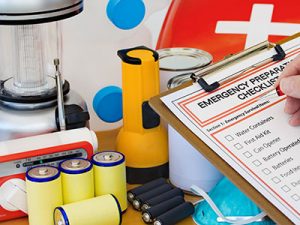 At Hawaii Water Service, we care about our customers. That’s why we take emergency planning very seriously.
At Hawaii Water Service, we care about our customers. That’s why we take emergency planning very seriously.
Working in concert with emergency response agencies, we have developed plans for responding to various emergency scenarios, from earthquakes to pandemics. Although we hope we will not need to put these plans in action, we prepare well in advance so that we can still help keep water flowing if disaster strikes.
How We Prepare
Although urban water systems are not designed to have unlimited supply or fully extinguish emergencies such as widespread or prolonged fires, we have a comprehensive emergency preparedness program in place, work with our local fire departments to help manage water demand on the system, help boost pressure during fire emergencies when needed, and coordinate with the cities we serve to mitigate potential supply impacts.
For wildfires specifically, among some of the steps we take to prepare for and harden our system against these fires are:
- Installing generators at key facilities to keep our infrastructure operating properly if power is lost or shut off.
- Positioning backup, portable generators where needed at other facilities.
- Visually inspecting our hydrants regularly and proactively maintaining them regularly to confirm they can function properly.
- Upgrading hydrants as part of our Infrastructure Improvement Planning process.
- Replacing aging and higher-risk water mains, and increasing the size of main in certain locations to help increase flow and volume.
- Reconfiguring pipelines in certain areas to maximize flow.
- Making other infrastructure investments to increase water storage capacity, upgrade pump stations, and add remote monitoring.
- Creating defensible space around our facilities through vegetation management.
- Equipping our employees with fire packs, portable extinguisher pumps that help stop small spot fires that may reach our facilities should they be on site.
- Conducting community EOC training, based on the National Incident Management System and Incident Command System, with local cities and first responders to increase coordination and readiness.
- Procuring lay-flat hoses to move water from one location to another.
How You Can Get Prepared
No one can predict the future, but we can all do our part to be better ready to respond to emergencies. To help you prepare, we’ve provided the following general and water-specific information:



